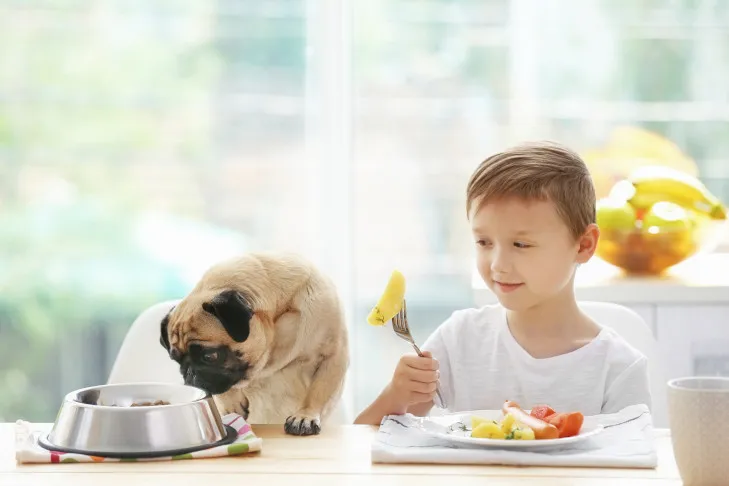Onions are a staple in many kitchens, adding bold flavor to meals, but are onions toxic to dogs? Unfortunately, yes—this common vegetable poses serious health risks due to a compound that damages red blood cells. As a dog owner, understanding why onions are dangerous can help you keep your furry friend safe from hemolytic anemia and other complications. In this guide, we’ll break down the science, symptoms, and steps to take if exposure occurs.
For more details on specific harmful elements, check out what in onions is bad for dogs.
The Science Behind Onion Toxicity in Dogs
Onions contain N-propyl disulfide, a toxic compound that targets red blood cells. This substance binds to oxygen molecules in the cells, causing oxidative damage. The dog’s immune system mistakes these altered cells for invaders, leading to hemolysis—the destruction of red blood cells—and potentially severe anemia.
This process reduces oxygen delivery throughout the body, affecting vital organs. Even small amounts can trigger issues, especially in smaller breeds. Veterinary experts, like those from the American Kennel Club (AKC), emphasize that allium family members, including onions, disrupt normal blood function in canines.
 Cavalier King Charles Spaniel resting its head on the kitchen table begging.
Cavalier King Charles Spaniel resting its head on the kitchen table begging.
Which Parts of Onions Harm Dogs?
Every part of the onion is toxic: the bulb, leaves, juice, skin, and even powdered forms. Whether raw, cooked, fried, or dehydrated, onions retain their harmful properties. The allium family extends this risk to garlic, leeks, shallots, and chives—all equally dangerous.
Powdered onion and garlic are particularly sneaky, appearing in spice mixes, soups, gravies, and even baby foods. Always scan ingredient labels on any human foods shared with dogs. Multi-pet homes should note onions are even deadlier for cats, amplifying the need for strict kitchen vigilance.
To explore a broader list of what dogs can’t have, review common household hazards.
How Much Onion Is Dangerous for Dogs?
Toxicity thresholds vary by size: about 0.5% of a dog’s body weight in onions can cause harm. For a 20 kg (45 lb) dog, one medium onion (around 100g) suffices for dangerous levels. Larger dogs might tolerate slightly more, but smaller ones like Chihuahuas face risks from mere scraps.
Dogs often snatch unattended onion rings, casseroles, or pizza toppings, escalating exposure. Japanese breeds like Akitas and Shiba Inus may be genetically more sensitive, per veterinary studies. Prevention hinges on secure storage and training.
Recognizing Symptoms of Onion Poisoning in Dogs
Watch for anemia signs if onion ingestion is suspected:
- Lethargy and weakness
- Pale or bluish gums
- Loss of appetite
- Increased heart rate and panting
- Vomiting or reddish urine
- Fainting or collapse in severe cases
Symptoms may appear 1-5 days post-exposure as red blood cells break down. Heinz bodies—damaged cell indicators—show on blood smears. Prompt vet evaluation, including blood tests, confirms diagnosis amid similar conditions like other toxicities.
 Pug eating with a boy at the table.
Pug eating with a boy at the table.
Early detection boosts recovery odds. For general safe and unsafe foods, see what dogs can and cannot eat.
Treatment and Recovery from Onion Toxicity
Never induce vomiting at home—contact a vet or Pet Poison Helpline immediately. Provide ingestion details: amount, type, and timing. Vets may pump the stomach if recent, followed by IV fluids, activated charcoal, and oxygen support.
Blood transfusions treat severe anemia. Recovery involves monitoring until new red blood cells regenerate (4-6 weeks). Most dogs bounce back with quick intervention, but delays can be fatal.
Explore what human food can bulldogs eat for breed-specific tips while avoiding risks.
Safe Vegetable Alternatives for Dogs
Skip onions, but offer dog-friendly veggies in moderation:
- Carrots for crunch and vitamin A
- Cucumbers for hydration
- Green beans for fiber
These low-calorie treats support health without toxicity risks. Always introduce gradually to avoid tummy upset—consult your vet for personalized advice.
In summary, onions are toxic to dogs due to N-propyl disulfide, causing hemolytic anemia with symptoms like lethargy and pale gums. Keep them out of reach, read labels diligently, and act fast on exposure. Your vigilance ensures a long, healthy life for your pup. Share your experiences in the comments or check more guides on dog-safe foods!
References:
- American Kennel Club (AKC): Articles on onion toxicity and anemia in dogs.
- Pet Poison Helpline: Guidelines for toxic exposures.
